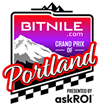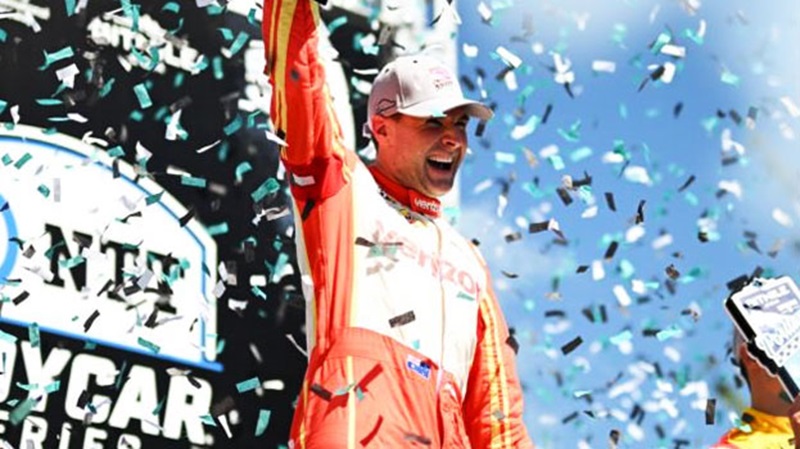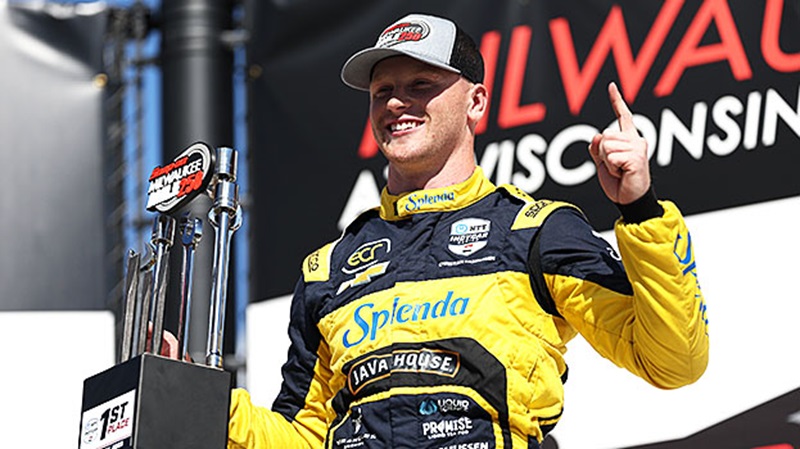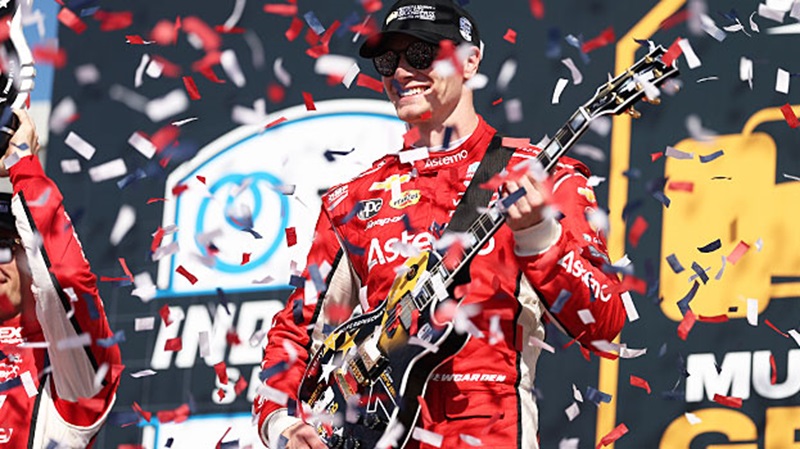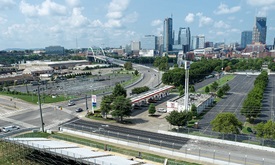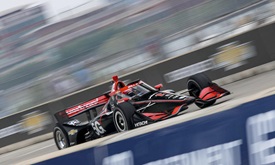Setups at New Tracks Are More Science than Guesswork in 2021
AUG 04, 2021
WATCH: Romain Grosjean in HPD Simulator
Engineers enjoy having a new puzzle to solve, and there have been a handful of such exercises offered by the NTT INDYCAR SERIES over the past decade.
The inaugural race at NOLA Motorsports Park in 2015 comes to mind. The new street races in Sao Paulo, Brazil (2010) and Baltimore (2011) are examples, too. Houston had the most recent new street circuit, in 2013, although many of the INDYCAR teams had competed at Reliant Park in 2006 and ’07 with different versions of the circuit built in the parking lot of the two stadiums.
The latest unchartered territory is the new street race in Nashville, Tennessee, where the Big Machine Music City Grand Prix will be held later this Friday through Sunday. By the time Sunday’s 80-lap race is held – 5:30 p.m. ET on NBCSN and the INDYCAR Radio Network – most of the competitors will have figured out how to race the circuit. But until then …
Calculated projections, mostly.
Years ago, before computers and race-weekend track walks, teams estimated circuit measurements and gave it their best go. Tony Cotman, a former INDYCAR team manager who designed this Nashville circuit, remembers the process of establishing an initial setup was “more about feel than anything.”
“You’d base gearing on what you thought the (length of the) straightaway was and what the radius of the corners might be,” he said. “And (the setup) would change a lot during the race weekend.”
More recently, engineers utilized Google Maps to zero in on more accurate measurements to calculate speed, gearing and downforce levels. But even that wasn’t precise.
The Nashville event will come to life over the next few days, but this field of competitors essentially know what is ahead of them. Cotman, who owns NZR Consulting, provided information about barrier placement to the engineers at Chevrolet and Honda, and they used laser scanning to create a three-dimensional representation of the 11-turn, 2.17-mile circuit. From there, computer modeling has generated the relevant information to create a baseline of information. Several teams said they are leaning on their engine manufacturer for direction.
For example, Honda has generated its recommendations based on drivers suing Honda Performance Development’s Driver-in-the-Loop (DIL) simulator in Brownsburg, Indiana. The virtual laps replicate on-track situations such as changing track and ambient temperatures, tire grip and wind speed/direction. Analyzed are projected aerodynamics, engine mapping and development paths, all to assist drivers learning the next track on the circuit.
“Hugely important,” said first-year NTT INDYCAR SERIES driver Romain Grosjean of the HPD simulator. “It’s helped me learn the tracks, set up the car and understand what it takes to go fast, and to get there quickly.”
Final adaptation comes down to being at the track. Having experience at other new venues is beneficial.
“(New tracks) are always fun because it’s a more even playing field, but the drivers who know what they want (from the setup) and how to adjust quickly usually know how to get the most out of it,” said veteran engineer Brent “Woody” Harvey, who works the No. 21 Sonax/Autogeek Chevrolet of Ed Carpenter Racing’s Rinus VeeKay.
That would suggest drivers such as six-time series champion Scott Dixon of Chip Ganassi Racing, the Team Penske veteran trio of Will Power, Simon Pagenaud and Josef Newgarden, Andretti Autosport’s Ryan Hunter-Reay and Alexander Rossi, and AJ Foyt Racing’s Sebastien Bourdais could be near the top when the first practice is held at 4:10 p.m. (ET) Friday (live on Peacock Premium). Watch for Grosjean, too, given his decade of racing in Formula One.
Power has been quick to adapt to new circuits, winning the inaugural INDYCAR races in Sao Paulo and Baltimore. James Hinchcliffe, who drove for Andretti Autosport then and now, won at NOLA, then a new road course south of New Orleans. Dixon, Bourdais, Hunter-Reay and Helio Castroneves (now with Meyer Shank Racing) experienced a host of new circuits while in Champ Car in the 2000s, and that should be an advantage this weekend.
Like all street circuits, the Nashville layout has its own character. For starters, the action runs in a counterclockwise direction, making it one of only two circuits on the INDYCAR schedule to do that (WeatherTech Raceway Laguna Seca is the other). Of the 11 turns, seven are to the left, tied for the most drivers will experience on a given day in 2021.
Then there’s the crossing of the Korean Veterans Memorial Bridge over the Cumberland River, one of only two times this season INDYCAR drivers will pass over water (the Detroit circuit has two brief crossings). In this case, both directions of the bridge will be used. That, too, is rare in motorsports.
Cotman estimated the bridge distance at 2,500 feet with another 1,000 feet of descent to Turn 7. Four turns later, the long run to Turn 1 begins, and it will be visually dramatic, if not a thrilling experience. Estimates have cars traveling upward of 200 mph as they approach Turn 1, the first of several expected passing zones.
The longest straightaway – from Turn 11 to Turn 1 – is reminiscent of what INDYCAR drivers experienced in Sao Paulo. That’s where Hinchcliffe used the hard braking zone to pass Takuma Sato on the last lap for the victory in 2013. Another comparison is the Lakeshore Drive run at Long Beach, which similarly ends with a hard braking zone.
But here’s the difference:
“Long Beach, Toronto, St. Petersburg – they’re all pretty flat,” Cotman said. “This track has only two actually flat straights. Everything else has some sort of slope or camber in it.”
There will be bumps along the way, too, drawing comparisons to what drivers experience in Detroit. Bumps have been factored into the simulations, but they become real as the cars bounce over them. How teams adjust to them is generally key at most circuits.
“In terms of modeling (Nashville), there are things we’re taking educated guesses on, and they’re certainly guesses,” Arrow McLaren SP president Taylor Kiel said. “I think after the first practice you’re going to see a lot of teams scrambling to make some big changes.
“Hopefully, we can throw the dart as close to the center as we can.”

